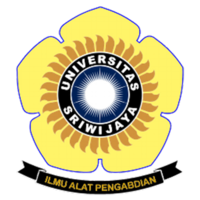Pengembangan Model Pertanian Terpadu Berbasis Mamar di Kabupaten Kupang, Nusa Tenggara Timur
Abstract
Matheus R, Basri M, Lewar Y. 2020. Development of mamar-based integrated agriculture model in Kupang district, east Nusa Tenggara. In: Herlinda S et al. (Eds.), Prosiding Seminar Nasional Lahan Suboptimal ke-8 Tahun 2020, Palembang 20 Oktober 2020. pp. xx. Palembang: Penerbit & Percetakan Universitas Sriwijaya (UNSRI).
For the Timorese people, mamar has strategic meaning. Mamar is also defined as a form or pattern of integrated farming developed on a stretch of land around a spring. Mamar productivity continues to decline due to lack of management by farmers. This study aims to identify the characteristics of mamar in the Kupang district, in order to develop more productive and sustainable mamar. This study used a survey method. which is carried out through field observations including observing the physical condition of the mamar environment, identifying the constituent components of the mamar, tracking the area of the mamar and taking soil samples. The results showed that: In mamar management, indigenous peoples apply a zoning system, which is divided into a core zone, a buffer zone and a development zone, with different utilization patterns; Mamar has 3 functions, namely: ecological, economic and social functions; One of the advantages possessed by mamar is the high value of sustainability; Mamar productivity can be increased through several forms, namely rejuvenating core plants in mamar, and inducing long-aged plants with high economic value and utilizing the space under annual plant stands with bio-plants. It is necessary to re-strengthen customary institutions in each mamar area; Mamar development needs to be directed to provide a multiplayer effect for local communities.
For the Timorese people, mamar has strategic meaning. Mamar is also defined as a form or pattern of integrated farming developed on a stretch of land around a spring. Mamar productivity continues to decline due to lack of management by farmers. This study aims to identify the characteristics of mamar in the Kupang district, in order to develop more productive and sustainable mamar. This study used a survey method. which is carried out through field observations including observing the physical condition of the mamar environment, identifying the constituent components of the mamar, tracking the area of the mamar and taking soil samples. The results showed that: In mamar management, indigenous peoples apply a zoning system, which is divided into a core zone, a buffer zone and a development zone, with different utilization patterns; Mamar has 3 functions, namely: ecological, economic and social functions; One of the advantages possessed by mamar is the high value of sustainability; Mamar productivity can be increased through several forms, namely rejuvenating core plants in mamar, and inducing long-aged plants with high economic value and utilizing the space under annual plant stands with bio-plants. It is necessary to re-strengthen customary institutions in each mamar area; Mamar development needs to be directed to provide a multiplayer effect for local communities.
Keywords
integrated agriculture modell, mamar in Timor, local agriculture
Full Text:
PDFArticle Metrics
Abstract view : 1073 timesPDF - 2607 times
Refbacks
- There are currently no refbacks.

